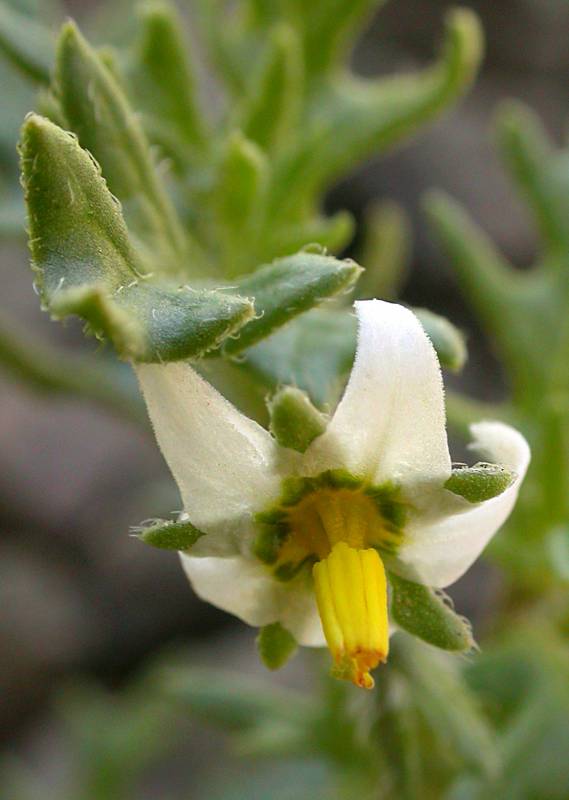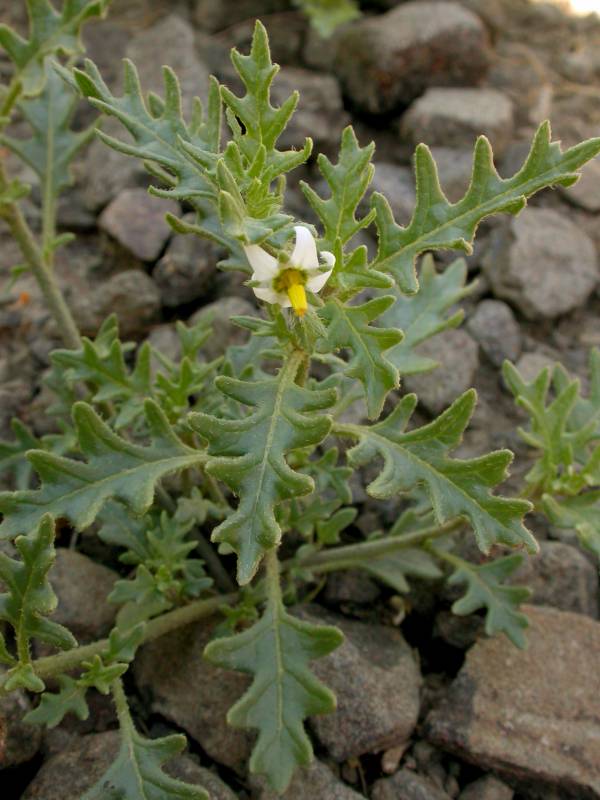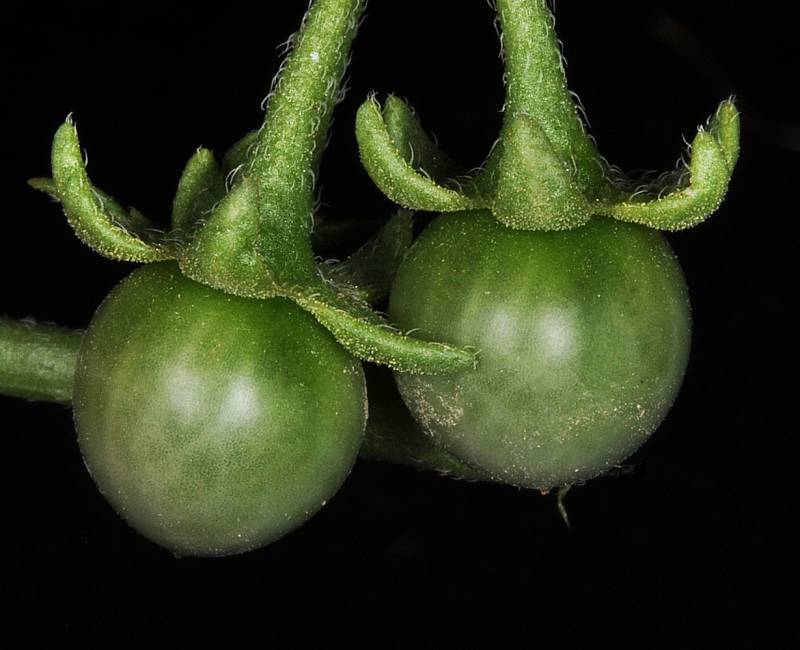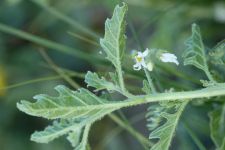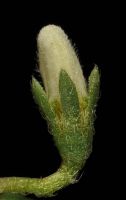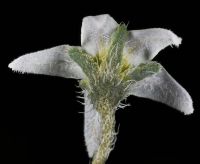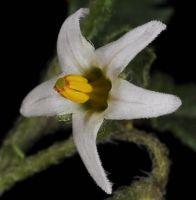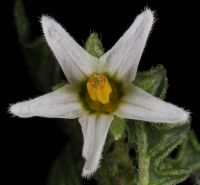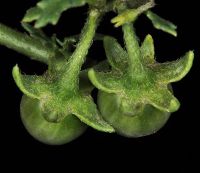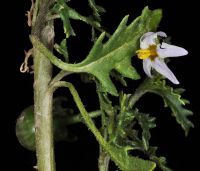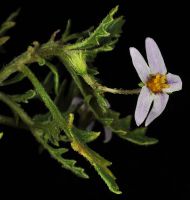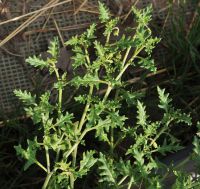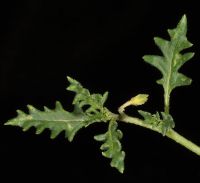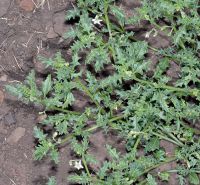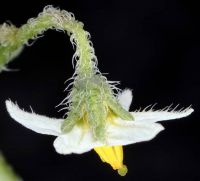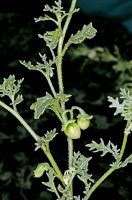Distribution: Occurring chiefly east of the Cascades crest in Washington; British Columbia to California, east across most of North America to the Atlantic Coast.
Habitat: Weedy native in fields and roadsides, often in undisturbed sites at low to moderate elevations.
Flowers: July-August
Origin: Introduced from South America
Growth Duration: Annual
Conservation Status: Not of concern
Pollination: Bumblebees, bees, flies
Fetid annual, branched from the base, the branches 1-6 dm. long, decumbent; herbage sparsely short-hairy.
Leaves short-petiolate, pinnately lobed, the blade 2-5 cm. long and 1-3 cm. wide, the rachis about equal in length to the lobes.
Inflorescence of several ascending, stout, few-flowered peduncles, 0.5-2.5 cm. long, attached along the stem or opposite the leaves, the pedicels drooping, clustered; calyx tube short, the 5 narrow lobes unequal, up to 6 mm. long at maturity, the tips reflexed; corolla white, rotate, 5-9 mm. wide, the 5 lobes deeply divided; stamens 5, the anthers prominent, yellow; style solitary; ovary superior.
Fruit a greenish, globose berry, 9-14 mm. thick.
Publication: Gen. N. Amer. Pl. 1: 128. 1818.
PNW Herbaria: Specimen records of Solanum triflorum in the Consortium of Pacific Northwest Herbaria database
WA Flora Checklist: Solanum triflorum checklist entry
OregonFlora: Solanum triflorum information
E-Flora BC: Solanum triflorum atlas page
CalPhotos: Solanum triflorum photos

